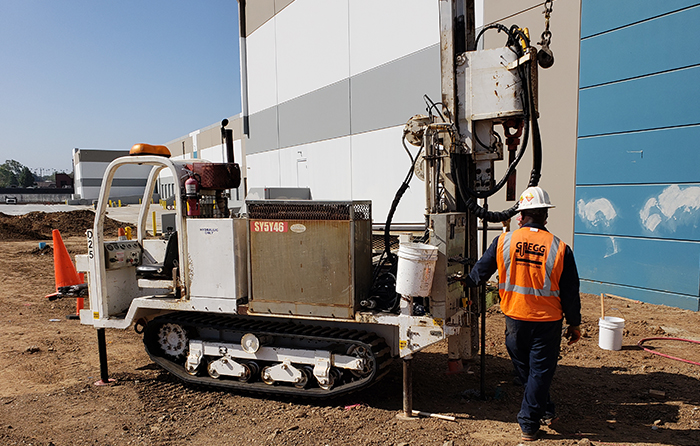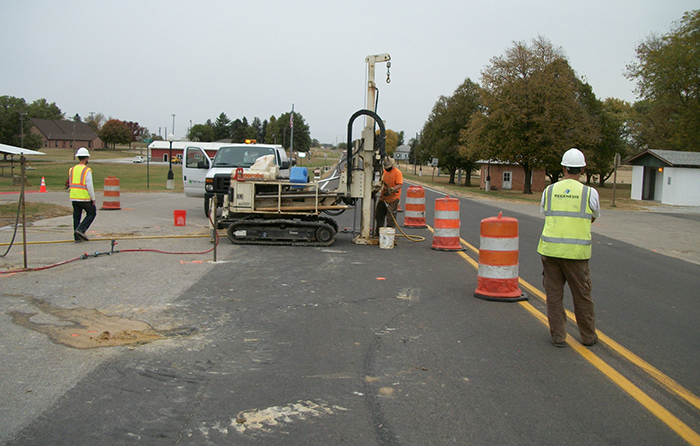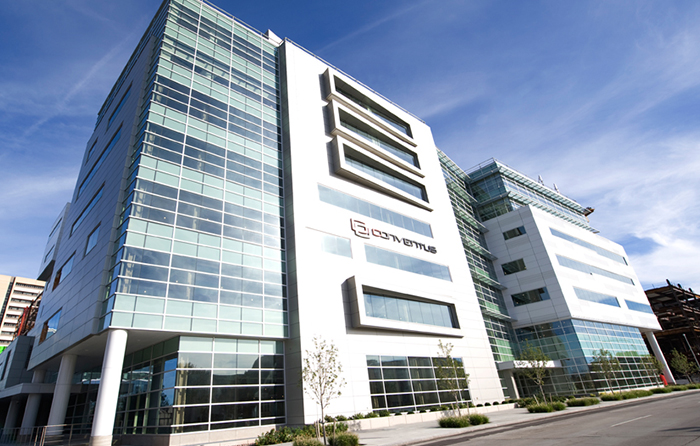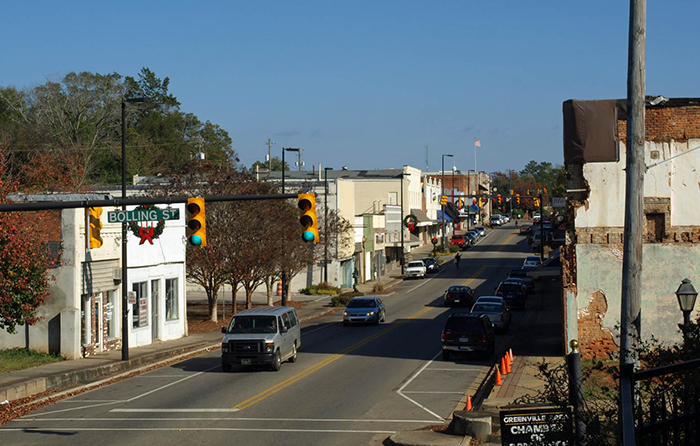PFAS Contaminants Reduced to Non-Detect
Case study highlights:
- All 14 PFAS compounds, including short chains, were reduced to ND within 6 weeks with maintained reductions through twelve months
- Successful pilot test resulted in full scale treatment
- Modeling performed by IRSL suggests that this reduction will be maintained for over 30 years without the need for further re-injection
This case study reviews a bulk storage facility located in the Middle East region that had released a mixed plume of petroleum hydrocarbons and Per and Polyfluoroalkyl substances (PFAS). PFAS constituents were effectively reduced to non-detect following the application of PlumeStop and have remained at these levels for twelve months post-application. The goal was to achieve mass reduction in all groundwater contaminants in order to mitigate the risk of contaminant migration to an offsite receptor. InSitu Remediation Services Ltd. (IRSL) was engaged to develop a remediation approach for the contaminated site. IRSL has had prior success treating a similar mixture of PFAS and petroleum contaminants at previous sites, using PlumeStop to sorb the contamination from the groundwater. IRSL worked alongside REGENESIS to design a pilot study to ensure the feasibility to treat the affected saline aquifer.
Remediation of TCE Plume Speeds Sale of Brownfield Site
Case study highlights:
- REGENESIS’ micron-scale ZVI is applied under low-pressure and does not require fracking
- In just one month following the application, monitoring shows successful reduction of the TCE plume
- Hargis + Associates and Gregg Drilling helped to implement an innovative drilling design which applied the remedial agent through ten points simultaneously at under 50 psi
This case study reviews a former manufacturing site in Fullerton, CA, where a trichloroethylene (TCE) plume contaminated the groundwater and prevented the sale of the brownfield site. REGENESIS designed an injection plan using micron-scale Zero Valent Iron (ZVI) due to its proven ability to effectively reduce contaminant levels within a subsurface environment. In order to complete the remediation and move forward with the sale, Hargis + Associates worked with REGENESIS to develop an in situ chemical reduction (ISCR) design to address the plume. Regulatory limits on pounds per square inch (psi) were enforced for all injections. REGENESIS, Hargis + Associates, and Gregg Drilling worked closely with the regulatory agency to ensure that the remediation and injection of the ZVI would be completed at a low pressure. After gaining regulatory approval, Gregg Drilling injected 50,000 gallons at less than 80 psi. Within a month, this low-pressure application yielded as much as 100% reductions in some zones.
Pesticides, VOCs and petroleum hydrocarbons remediated with a suite of in situ technologies
In Situ reagent barriers (HRC) treat contaminated groundwater in sandstone under a schoolRead More
Global Retailer Enters Into Elective Site Cleanup Agreement and Achieves NFA
Case study highlights:
- PlumeStop, HRC, and BDI Plus successfully remediated persistent PCE, VC, and Cis-1,2-DCE contamination
- Environmental services firm ESGI and REGENESIS adapted the injection design according to the difficult site geology and weather conditions
- After one round of injections, successful results led to the site achieving NFA
This case study reviews the site of a global retailer based in Arkansas, where historic offsite dry cleaning operations caused tetrachloroethylene (PCE) contamination in the groundwater. After applications of PlumeStop, HRC, and BDI Plus, all COCs were below the acceptable threshold levels, and as a result the site achieved No Further Action (NFA) in January of 2020. A previous bioremediation attempt successfully remediated a majority of the site but one persistent well remained. In order to achieve site closure, ESGI had to continue quarterly monitoring until sufficient data existed to conclude that there was no potential for offsite migration of PCE above the acceptable groundwater screening levels. After time passed with little change to the B-45 well, ESGI sought out a bioremediation strategy that would work quickly with long term success. ESGI partnered with REGENESIS to design a bioremediation plan that would apply PlumeStop®, Liquid activated Carbon, Hydrogen Release Compound® (HRC) and Bio-Dechlor Inoculum® (BDI Plus) to eliminate the remaining contaminants of concern (COCs).
Petroleum Hydrocarbon Plume Treated to Non-Detect within 50 Days
Case study highlights:
- Thorough Design Verification Testing (DVT) program helped to create a unique design for effectively treating the contaminant plume.
- Cost-effective design and application required a single application event.
- The remedial approach successfully treated a 200 ft. long dissolved phase hydrocarbon plume within the first 50 days.
This case study reviews an active gas station in Nebraska that was adversely impacted by a dissolved‑phase, hydrocarbon plume. The treatment solution from REGENESIS was successful in reducing the concentrations of BTEX, TPH-G, and MTBE to non-detect levels. REGENESIS conducted a thorough and innovative DVT program prior to remediation in order to ensure an effective remedial design. They used the DVT to produce a design which fit the precise needs of the site as well as the client’s budget. After the successful treatment, the consultant continued to monitor the groundwater trends until the Nebraska Department of Environment and Energy (NDEE) granted the site closure status. The on-site gas station has remained open for business.
Excavation With RegenOx Successfully Treats Large PHC Plume
Case study highlights:
- After previous consultants attempted remediation without success, C&S created a remediation strategy that successfully reduced the plume.
- The combined remedy approach of excavation and ISCO exceeded the remediation goals.
- Successful remediation enabled the construction of a 350,000 sq. ft. $110 million facility at the Buffalo Niagara Medical Campus.
This case study reviews a former gas station site in Buffalo, New York that required remediation due to leaking underground storage tanks. Together with REGENESIS, C&S Consulting designed an in situ remediation strategy to target the residual contaminant plume. RegenOx® in situ chemical oxidant was chosen because of its ability to target petroleum hydrocarbons and its non-corrosive properties. As part of the New York State Department of Environmental Conservation (NYSDEC) Brownfield Cleanup Program, C&S designed a complex remediation program to ensure a quick and affordable solution. Petroleum contamination extended from 10 to 40 feet below grade. The site was excavated to 26 feet below ground surface to remove residual contamination and to enable equipment staging and material handling areas to support the deeper excavation area.
Cost-Effective Treatment To Address PCE At Former Dry Cleaning Site
Case study highlights:
- Soil mixing with PersulfOx® cost less than half of the thermal desorption treatment.
- Very aggressive remediation goals were met on a quick timeline.
- One application of PersulfOx was powerful enough to reduce contaminant levels from 18,000 ppm to 150 ppm.
This case study reviews a former dry cleaning site in an upscale Chicago suburb that was contaminated with chlorinated solvents, specifically perchloroethylene. Cabeno Environmental, a turnkey environmental contractor, worked alongside REGENESIS to create an effective remedial design for this high profile site. They chose to treat the contaminated soil with in situ soil mixing using PersulfOx, an activated persulfate. Cabeno Environmental chose to treat the contaminated soil with in situ soil mixing using PersulfOx, an activated persulfate. This technology was chosen because it effectively and rapidly promotes in situ oxidation of a wide range of organic contaminants. After Cabeno Environental conducted a pilot test to refine the remedial design, the site was treated with hydrogen peroxide and 83,146 pounds of PersulfOx. Within one month of completing the soil mixing, the closure sampling was conducted. This quick timeline along with strict remediation goals demonstrated the power and effectiveness of the PersulfOx technology.
Combined Amendment Approach Treats Chlorinated Solvents
Case study highlights:
- Combined remedy approach ensured effective remediation.
- FDEP Voluntary Cleanup program provided tax credits making the remediation and redevelopment possible.
- Remediation allowed the undeveloped block to be developed into a nine-story office building in a growing area of downtown Jacksonville.
This case study reviews a formerly undeveloped site in downtown Jacksonville that was impacted with chlorinated solvents in the groundwater and metal-impacted soils. To treat the chlorinated solvent groundwater plume, Terracon selected multiple technologies from REGENESIS, including PlumeStop, zero-valent iron (ZVI), Bio-Dechlor Inoculum Plus (BDI Plus), and Hydrogen Release Compound (HRC). The site required remediation prior to moving forward with development. Ryan Companies US, Inc. (Ryan) was under contract to purchase the property from the site owner and was seeking an expedited closure of the site prior to completion of construction. Ryan plans to develop the site with a nine-story office building and an associated nine-level parking deck. Site rehabilitation through remediation and regulatory closure is being sought through Florida Department of Environmental Protection (FDEP) voluntary cleanup. Environmental engineering and consulting firm Terracon evaluated a variety of remedial technologies as well as existing site conditions to determine the most appropriate application for the site.
Innovative Approach Reduces Benzene To Achieve Closure
Case study highlights:
- Exceptional benzene reduction using PersfulOx quickly reduced contaminant levels within a short timeframe.
- Design Verification Testing (DVT) fine-tuned the application to increase effectiveness.
- Addition of PlumeStop application ensured against back diffusion to help reach site closure.
This case study reviews a gas station site in Greenville, Alabama where petroleum hydrocarbon contamination was present in the subsurface for decades. PersulfOx, PlumeStop, and ORC Advanced were applied to quickly reduce benzene levels to non-detect, resulting in successful regulatory closure. This site is part of an environmental liability transfer and Antea Group®, an international engineering and environmental consulting firm, assumed the liability for this site. Antea Group required an effective remedial solution that would result in rapid site closure. Antea Group partnered with REGENESIS® to create a remedial design using an in situ chemical oxidation (ISCO) treatment paired with an aerobic bioremediation technology to ensure a complete treatment of this site.
PetroFix Successfully Treats Residential Fuel Oil Leak
Case study highlights:
- PetroFix successfully remediated the fuel oil contaminant spill and the site achieved regulatory closure.
- After three quarters of sampling the contaminants were below groundwater exceedance levels and within Method 1 standards for groundwater.
- Combined remedial approach included excavation and PetroFix injection.
This case study reviews a residential site in northwestern Massachusetts where the groundwater was contaminated with 200 gallons of home heating fuel oil. PetroFix Remediation Fluid reduced the heating oil constituents to below detectable limits, resulting in successful regulatory closure. After an excavation, WjF GeoConsultants created a remedial plan for the impacted groundwater which employed PetroFix to treat the remaining petroleum hydrocarbons. PetroFix is an affordable and effective technology which removes hydrocarbons from the dissolved phase and then stimulates hydrocarbon biodegradation by adding electron acceptors. In October 2018, WjF applied 800 lbs of PetroFix Remedial Solution. Following the application, WjF conducted three quarters of sampling which indicated that the contaminants were below groundwater exceedance levels and were within Method 1 Standards for groundwater. Following the third sampling event, the site received regulatory closure from the state.

 Americas
Americas Europe
Europe Français
Français Deutsch
Deutsch Italiano
Italiano Español
Español













